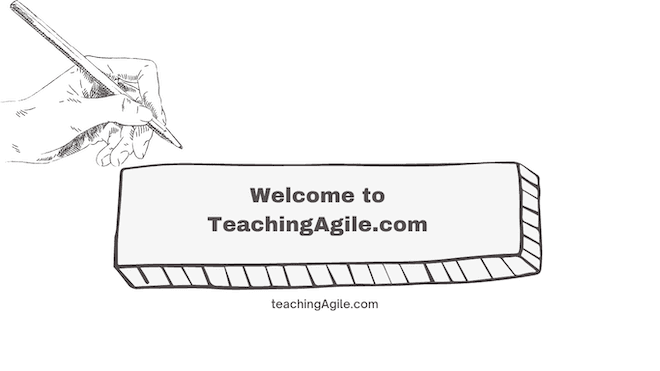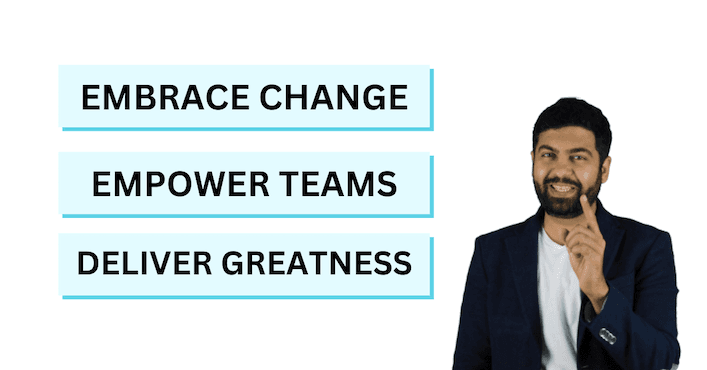
Agile and Beyond: Explore the World of Agile Frameworks
 Welcome to TeachingAgile.com
Welcome to TeachingAgile.com
At its heart, Agile is all about being flexible, collaborative, and following an iterative approach to solving problems. Agile has revolutionized the way teams work and deliver quality.
Initially, Agile was adopted for developing software, but looking at the results, Agile has found applications in diverse fields, reshaping how projects are conceived and executed.
There are different versions of how to be agile or the various frameworks you can choose. We will cover all the frameworks that can make you and your teams Agile and deliver quality together.
We will cover the Agile frameworks of Scrum, Kanban, Extreme Programming (XP), Feature Driven Development (FDD), Dynamic Systems Development (DSDM), Lean Software Development, Crystal, Scaled Agile Framework (SAFe), and more as these frameworks evolve to make our teams better helping us deliver better quality projects.
Table Of Contents-
Agile Methodology
Agile methodology is a flexible and iterative approach to software development that emphasizes collaboration, adaptability, and customer satisfaction.
It focuses on delivering small, incremental improvements to a product, with frequent reassessments and adjustments throughout the project lifecycle.
Agile teams work closely with stakeholders and are highly responsive to their feedback, ensuring that the final product meets users' needs and expectations.
If you will read and get to know most of these agile frameworks, they work on optimizing the triple constraints on Scope, time and cost.
The other key attribute each of these frameworks has is how to make a product with better quality and more transparency.
Scrum
Scrum is a popular Agile framework that organizes work into short, iterative cycles called Sprints.
Each Sprint lasts between one to four weeks and involves the entire Scrum team working together to complete a set of user stories from the product backlog.
Scrum emphasizes transparency, inspection, and adaptation, allowing teams to continuously improve their processes and deliver high-quality products.
Key roles in Scrum include the Product Owner (opens in a new tab), Scrum Master, and Development Team.
Kanban
Kanban is another Agile approach that focuses on visualizing work, limiting work-in-progress (WIP), and continuously improving workflow efficiency.
Teams using Kanban create a visual representation of their work items, often using a Kanban board with columns representing different stages in the workflow.
By limiting the number of work items allowed in each column, Kanban helps teams to identify bottlenecks and improve their processes over time.
Kanban is highly flexible and can be easily adapted to fit any team's unique requirements.
Extreme Programming (XP)
Extreme Programming (XP) is a software development methodology that focuses on improving software quality and responsiveness to changing customer requirements.
XP emphasizes practices such as pair programming, test-driven development, continuous integration, and frequent releases. This Agile framework ensures that the development team produces high-quality code and adapts quickly to changing requirements.
Feature-Driven Development (FDD)
Feature-Driven Development (FDD) is a model-driven, short-iteration Agile method that primarily focuses on developing features.
FDD involves creating a detailed model of the system, followed by iterative planning, design, and development of individual features.
This approach ensures that the most important features are prioritized and delivered first, maximizing customer satisfaction.
Dynamic Systems Development Method (DSDM)
Dynamic Systems Development Method (DSDM) is an Agile framework that focuses on delivering software projects on time and within budget.
DSDM uses prioritized requirements and iterative development to ensure the most critical functionality is delivered first. By emphasizing collaboration, DSDM helps teams to make the best decisions and deliver the right product.
Lean Software Development
Lean Software Development is an Agile approach derived from Lean manufacturing principles, focusing on optimizing efficiency and minimizing waste.
Lean Software Development emphasizes practices such as just-in-time production, continuous improvement, and empowering teams to make decisions. By eliminating non-value-adding activities, Lean helps teams deliver high-quality products faster.
Crystal
Crystal is a family of Agile methodologies tailored to different project sizes and unique team attributes. Crystal focuses on the principle of "less is more" and emphasizes people and interactions over processes and tools.
Each Crystal methodology is named after a color, with the color representing the project size and complexity. Some examples include Crystal Clear, Crystal Yellow, Crystal Orange, and Crystal Red.
By prioritizing communication and simplicity, Crystal helps teams work more efficiently and effectively.
Scaled Agile Framework (SAFe)
Scaled Agile Framework (SAFe) is an Agile framework designed for scaling Agile practices to large organizations or multiple teams working on the same product.
SAFe combines elements from Scrum, XP, and Lean, and provides guidance on roles, responsibilities, and artifacts for large-scale Agile projects.
By aligning the entire organization around a common set of goals and practices, SAFe helps teams deliver complex, large-scale projects with high quality and efficiency.
 Embrace change, empower
teams, and deliver greatness.
Embrace change, empower
teams, and deliver greatness.
Conclusion
As a philosophy rooted in the Agile Manifesto, Agile encourages teams to embrace change, prioritize individuals and interactions, and constantly strive to deliver working software that adds value to customers.
By placing such an emphasis on adaptability and user satisfaction, Agile ensures that projects remain aligned with customer needs and market dynamics, regardless of how frequently they change.
As we move forward into a future of increasing complexity and rapid change, the importance and relevance of Agile in project management cannot be overstated.
It will continue to empower teams, foster innovation, and drive success in our ever-evolving world.
Continue Reading
An Agile ExampleDiscover how a financial services company successfully transformed its software development process by implementing Agile methodology, resulting in improved customer satisfaction and team dynamics.Agile Certifications: A Comprehensive Guide to Boost Your CareerDiscover the various Agile certifications and how they can help you advance your career. Compare the benefits, drawbacks, and the triple constraint in this detailed guideLearn about Scrum and PSM-1 CertificationLearn about the PSM-1™ Certification for Scrum, its importance, and how to prepare for the exam to boost your Scrum Master career.Learn about Software Development Life Cycle (SDLC)Get an overview of the Software Development Life Cycle (SDLC), and learn about the key phases and activities involved.Agile vs. WaterfallDiscover the differences between Agile and Waterfall methodologies in project management, and learn how to choose the best approach for your projects.Effective Requirements Gathering: Techniques and TipsDiscover effective strategies for business analysts to master requirements gathering, ensuring projects are built on clear, actionable requirements.
Frequently Asked Questions (FAQs) / People Also Ask (PAA)
Which principles are considered most crucial in Agile methodology?
For beginners in Agile methodology, which certification is recommended as the best starting point?
What reasons make Agile a better choice than the Waterfall methodology?
Under what circumstances might Agile methodology not be the most effective approach?
What is the origin of the Agile methodology?
What is the role and responsibility of an Agile coach?
Are the terms 'Agile' and 'Scrum' interchangeable, or do they represent different concepts?